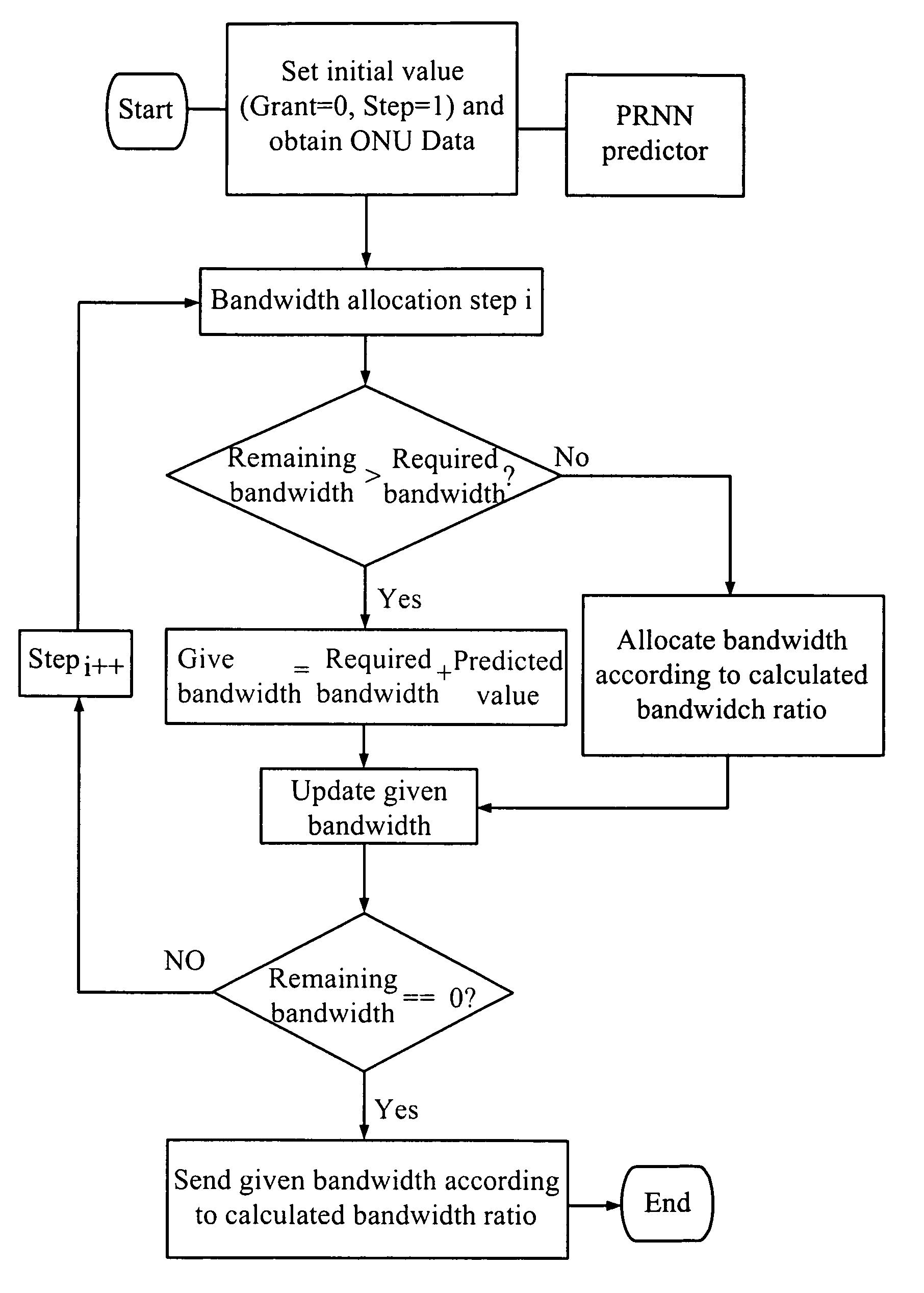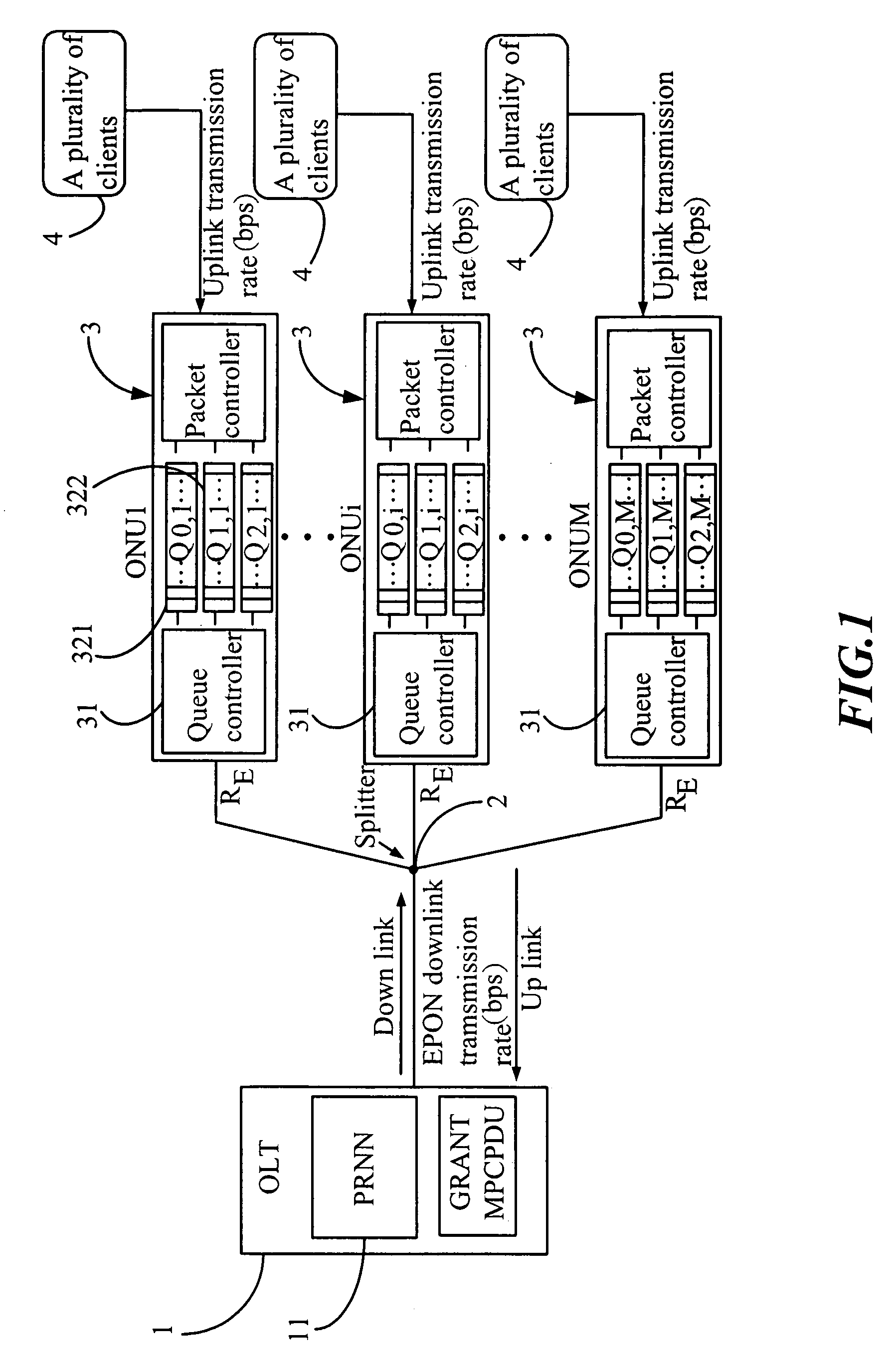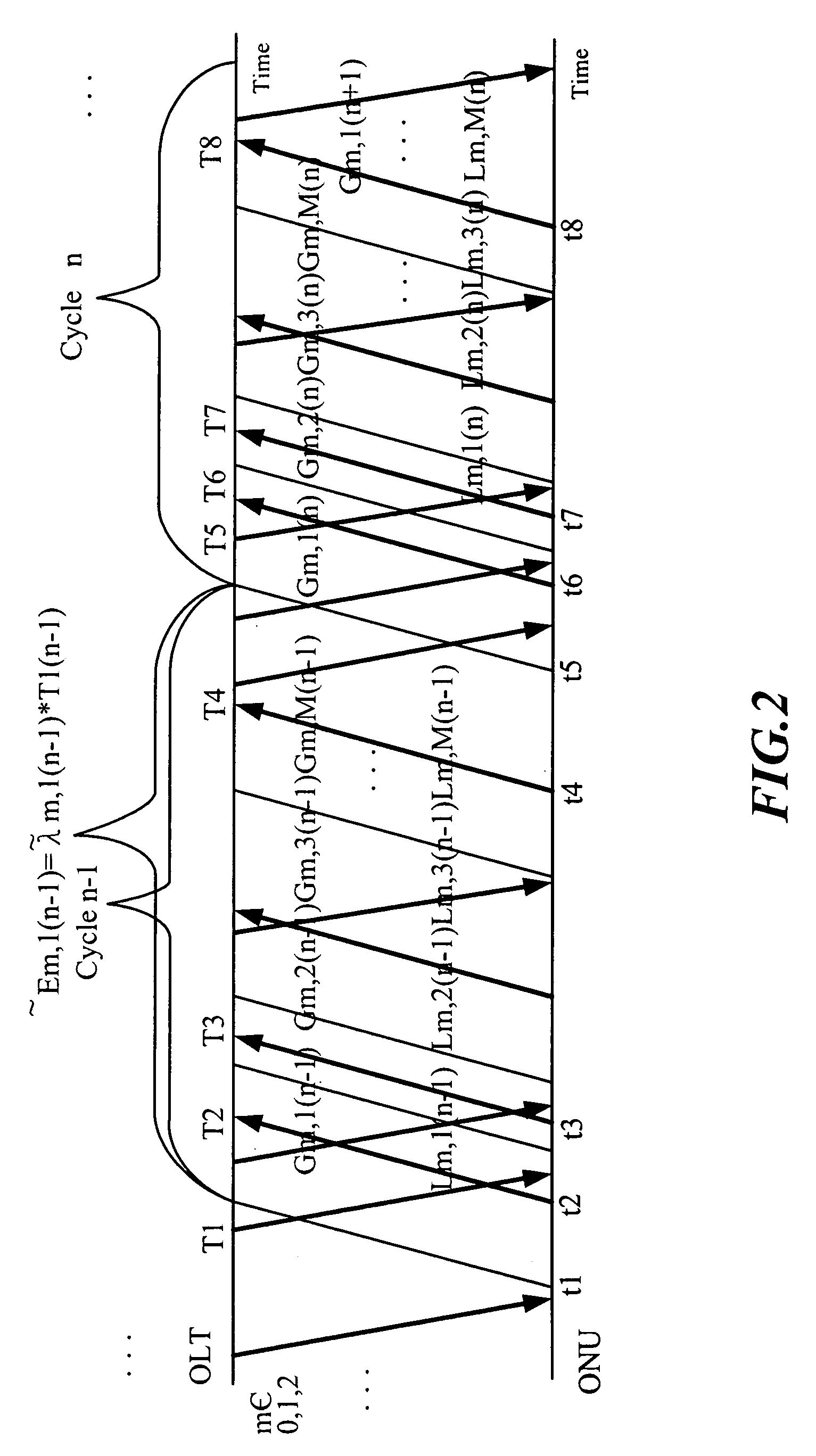Dynamic bandwidth allocation method of Ethernet passive optical network
a bandwidth allocation and dynamic technology, applied in data switching networks, multiplex communication, digital transmission, etc., can solve the problems of low bandwidth utilization rate, inability to handle the varying data packet demands of onus, inability to accept voice or real-time video traffic, etc., to improve the bandwidth utilization rate of ethernet passive optical network, the effect of accurate prediction
- Summary
- Abstract
- Description
- Claims
- Application Information
AI Technical Summary
Benefits of technology
Problems solved by technology
Method used
Image
Examples
Embodiment Construction
[0027]Please refer to FIG. 1 for a system structure of an Ethernet passive optical network using a dynamic bandwidth allocation method, which comprises:
[0028]a optical line terminal (OLT) 1 coupling with a splitter 2 for broadcasting downlink packets to a plurality of optical network units (ONU) 3, the OLT 1 further comprising a pipelined recurrent neural network (PRNN) 11 for distributing a GRANT MultiPoint Control Protocol Data Unit (MPCPDU);
[0029]the splitter 2 coupling with the OLT 1 and the plurality of ONUs 3, wherein the splitter 2 is a one-to-multiple-point splitter;
[0030]the plurality of ONUs 3 coupling with the splitter 2 and a plurality of clients 4, each ONU receiving its own packets according to a Logic Link Identifier (LLD) and dropping packets not matching with its LLD; each ONU comprising a queue controller 31, a voice packet queue 321, a video packet queue 322, a data packet queue 323 and a packet controller 33. Besides, the plurality of ONUs 3 would add a REPORT MP...
PUM
 Login to View More
Login to View More Abstract
Description
Claims
Application Information
 Login to View More
Login to View More - R&D
- Intellectual Property
- Life Sciences
- Materials
- Tech Scout
- Unparalleled Data Quality
- Higher Quality Content
- 60% Fewer Hallucinations
Browse by: Latest US Patents, China's latest patents, Technical Efficacy Thesaurus, Application Domain, Technology Topic, Popular Technical Reports.
© 2025 PatSnap. All rights reserved.Legal|Privacy policy|Modern Slavery Act Transparency Statement|Sitemap|About US| Contact US: help@patsnap.com



